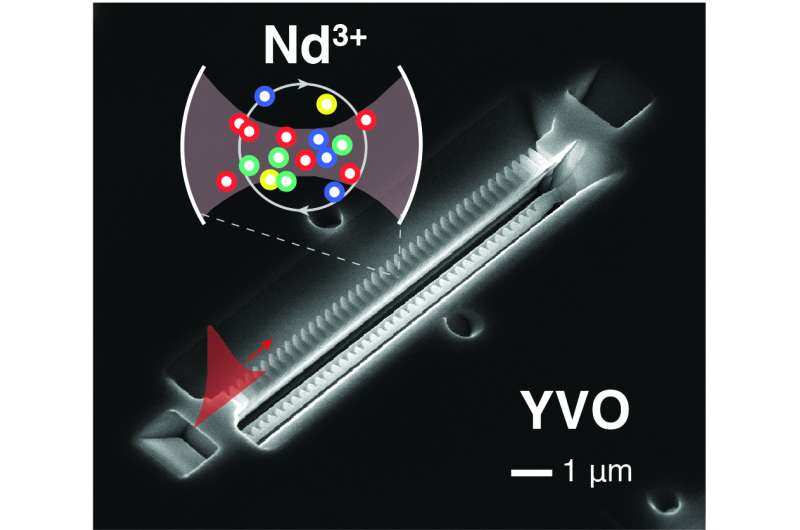September 1, 2017 report
New quantum memory device small enough to fit on a chip

(Phys.org)—A team of researchers from the U.S. and Italy has built a quantum memory device that is approximately 1000 times smaller than similar devices—small enough to install on a chip. In their paper published in the journal Science, the team describes building the memory device and their plans for adding to its functionality.
Scientists have been working steadily toward building quantum computers and networks, and have made strides in both areas in recent years. But one inhibiting factor is the construction of quantum memory devices. Such devices have been built, but until now, they have been too large to put on a chip, a requirement for practical applications. In this new effort, the researchers report developing a quantum memory device that is not only small enough to fit on a chip, but is also able to retrieve data on demand.
The device is very small, approximately 10 by 0.7 micrometers and has an odd shape, like a Toblerone candy bar—long and thin with a notched triangular shape, with mirrors on either end. It is made of yttrium orthovanadate with small amounts of neodymium, which form a cavity. These cavities in turn hold a crystal cavity that traps single photons encoding data information (zero, one or both).
To operate the device, the researchers fired laser pulses at it, causing photons to assemble in the comb, which forced them to be absorbed—the configuration also caused the photons to emerge from the comb after 75 nanoseconds. During the time period when the photons were absorbed, the researchers fired dual laser pulses at the comb to delay the reemergence of the photons for 10 nanoseconds, which allowed for on-demand retrieval of data. During the time period when the photons were held, they existed as dual pulses—early and late.
To show that the device was actually storing data information, the team compared the wavefunction of the photons both before and after storage and found them to be virtually unchanged, meaning they still held their zero, one or both state—it had not been destroyed, which meant the device was truly a quantum memory device.
More information: Tian Zhong et al. Nanophotonic rare-earth quantum memory with optically controlled retrieval, Science (2017). DOI: 10.1126/science.aan5959
Abstract
Optical quantum memories are essential elements in quantum networks for long distance distribution of quantum entanglement. Scalable development of quantum network nodes requires on-chip qubit storage functionality with control of its readout time. We demonstrate a high-fidelity nanophotonic quantum memory based on a mesoscopic neodymium ensemble coupled to a photonic crystal cavity. The nanocavity enables >95% spin polarization for efficient initialization of the atomic frequency comb memory, and time-bin-selective readout via enhanced optical Stark shift of the comb frequencies. Our solid-state memory is integrable with other chip-scale photon source and detector devices for multiplexed quantum and classical information processing at the network nodes.
Journal information: Science
© 2017 Phys.org




















